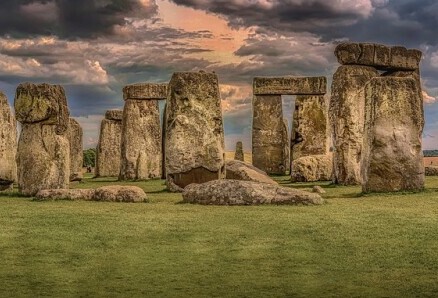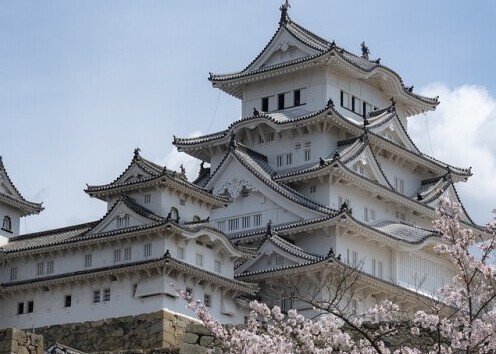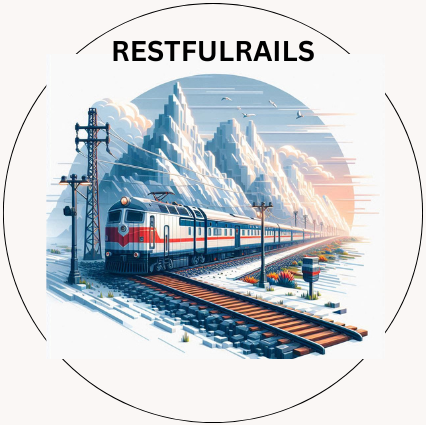
UNESCO is like the top guardian for places that have cultural or natural significance all around the world. Going beyond listing sites, it stands to protect and preserve these gems, creating a universal respect and awareness for shared heritage. When you hop on a train to explore these sites, you’re not just traveling; you’re connecting with stories that are sometimes thousands of years old.
Rail travel offers a unique vantage point that combines efficiency with scenic beauty, allowing travellers unprecedented access to some of the world’s most treasured sites. There’s something fulfilling about witnessing nature’s wonders and architecturally outstanding sites roll out before your eyes, making the journey as mesmerising as the destination itself. Forget about the fast-paced rush of airports; trains slow things down, making each moment count.
The coolest part about rail travel to UNESCO sites is the alignment with eco-friendly tourism. Trains emit fewer carbon emissions compared to cars or flights. This means you’ll be doing your bit to help preserve these awesome places just by choosing the train. It’s travel that doesn’t just see the world but respects it, making sure the impact stays in your heart, not on the planet.
Railway journeys help you feel the interconnectedness between different places along the route. There’s something magical about starting your journey in a modern metropolis and watching the landscapes transform into picturesque countrysides dotted with UNESCO jewels. It’s like the tracks are weaving a story, connecting different cultures, histories, and people into a single, fantastic adventure.
Europe’s UNESCO Treasures: A Journey Through Time on Rails
Europe offers an eclectic mix of UNESCO World Heritage Sites, and travelling by train can be your ticket to exploring them in style and comfort. There is something magical about watching the European countryside pass by as you head to iconic places like the mediaeval city centres of Bruges or the ancient ruins of Pompeii.
Rail routes take you to some of Europe’s most renowned cultural landmarks and hidden gems. From the heart of the Loire Valley’s elegant châteaux to the rugged beauty of the Scottish Highlands, trains weave through landscapes that echo with history and grandeur. Each stop brings its own unique charm, offering tales of the past and vibrant local life.
One can’t discuss Europe’s rail and UNESCO sites without mentioning the storied rail stations themselves. Take, for instance, St. Pancras in London or the awe-inspiring Grand Estación Central in Madrid. These places are more than just stops—they’re architectural and hismarvellingeats worth marvelling at as part of your journey.
While discovering UNESCO sites, the train journey itself becomes part of the experience, allowing you to integrate seamlessly with the locals you visit. Enjoy local delicacies onboard, or plan your stops to coincide with regional markets and festival times for a deeper appreciation. Practical rail passes offer flexible travel choices across countries; customise a journey that’s entirely your own.
Asia’s Hidden Heritage: Discovering UNESCO Sites by Train

Asia’s landscape is a tapestry of vibrant cultures and stunning natural beauty, and exploring its UNESCO World Heritage Sites by rail offers an adventure like no other. Train rides take you to destinations that often remain elusive to typical tourists, opening up a world peppered with ancient temples and remarkable landscapes.
In countries like Japan and India, the rail networks are extensive and well-connected, providing smooth access to UNESCO sites. Picture yourself travelling through Japan’s cherry blossoms on your way to the iconic Himeji Castle or exploring the colourful, temple-strewn city of Ayutthaya in Thailand, all achievable by rail.
The beauty of rail journeys in Asia lies in their ability to showcase breathtaking scenery that can only be seen from the tracks. Imagine riding through dense, green forests to reach Cambodia’s Angkor Wat or weaving through the lush landscapes of Sri Lanka on your way to the Dambulla Cave Temple. These routes offer more than just endpoints—they provide a lens into the cultures and histories of these regions.
While planning these journeys, it’s worth looking into scenic rail routes that offer a balance of cultural landmarks and natural wonders. Consider the Trans-Mongolian Railway for a sweeping experience capturing multiple UNESCO sites across vast terrains. Train travel in Asia not only unifies these remarkable locations but also indulge travelers with an immersion into the continent’s diverse cultures.
Practical Tips for Your UNESCO Rail Adventure
Planning a UNESCO rail journey is all about combining efficient travel with engaging experiences, and a bit of preparation can elevate your trip from good to unforgettable. Booking your train tickets a little in advance can save money and guarantee a spot, especially on popular routes like Europe’s Eurail or Japan’s Shinkansen.
Pack smart and light, with a comfortable day bag for essentials, as you’ll be hopping between trains and UNESCO sites. Consider local weather and the specific activities you plan to partake in—it can change drastically all travelling across different regions.
For a more meaningful journey, learning a few phrases of the local language or some key historical facts about the sites you plan to visit never hurts. Engaging with local guides or joining small group excursions can further enrich your understanding of the cultural and historical significance of these UNESCO treasures.
To savour the flavour, incorporate regional cuisines into your travel plans. Whether it’s tasting kimchi in Korea or sampling French pastries on the train, these experiences can offer a delicious insider’s view into the cultural fabric of the countries you travel through.
Sustainable practices are essential for leaving a positive impact on the sites you visit. Reuse and recycle where possible, opt for eco-friendly accommodations, and respect local customs and rules. Simple actions contribute significantly to conserving these beautiful places for future generations.
Equipped with these tips, your UNESCO rail adventure promises to be an exciting, enriching, and meaningful experience, capturing the essence of not the travel but thoughtful and respectful exploration.
Kindly leave your comments below.
** Here’s a little transparency: Our website contains affiliate links. We may receive a small commission if you click and make a purchase. Don’t worry, as there’s no extra cost to you. It’s a simple way to support our mission of bringing you quality content.
Related:

This was such a great read! Traveling by rail already has that nostalgic, adventurous feel, but combining it with UNESCO sites? I love how train travel lets you soak in the scenery along the way rather than just rushing from point A to B. Some of these spots are now definitely on my bucket list! Do you have a favorite UNESCO site that you’ve visited by train?
Hello Randi,
Thank you for your contributions to the article.
I couldn’t agree more; there is something about experiencing UNESCO sites by rail, where the journey itself is just as breathtaking as the destination.
Glad to hear some of these made it to your bucket list! One of my favourites has to be the Rhine Valley in Germany; the views along the river, passing castles and vineyards, are absolutely stunning.
Do you have a top pick you’d love to visit first?
I appreciate your insight into the piece.
Thank you.
Kind regards,
Makinde
Traveling by rail to UNESCO sites turns the journey itself into an immersive cultural adventure. Instead of just reaching a destination, you experience a moving tapestry of history and natural beauty from Europe’s medieval city centers to Asia’s ancient temples unfolding right outside your window. This mode of travel not only slows you down to savor each breathtaking scene, but also aligns with eco-friendly practices that help preserve these global treasures. With practical tips for planning, engaging with local culture, and embracing sustainable tourism, exploring UNESCO sites by rail becomes a transformative journey. It’s a chance to connect with our shared heritage, where every train ride weaves together past and present in a celebration of cultural legacy and environmental stewardship.
Hi Dan,
I appreciate your insightful contributions to the article.
Rail travel truly transforms the journey into part adventure, letting you soak in the history and landscapes in a way that planes and cars cannot.
The sustainability factor makes it even more rewarding.
Have you travelled to any UNESCO sites yet? Would love to hear about your experience.
Thank you for your insights.
Best regards,
Makinde